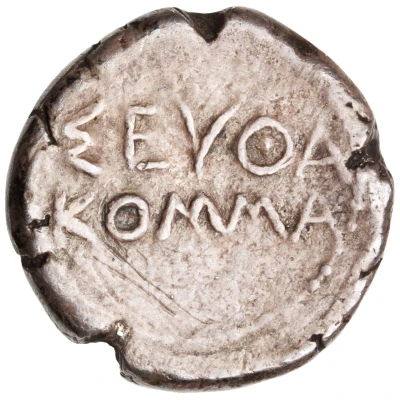


© Classical Numismatic Group, Inc.
Didrachm - Seuthes Type I 424 BC - 405 BC
| Silver | 8.56 g | 20 mm |
| Issuer | Kingdom of Odryssa (Thracians) |
|---|---|
| King | Seuthes I (424 BC - 407 BC) |
| Type | Standard circulation coin |
| Years | 424 BC - 405 BC |
| Value | Didrachm (2) |
| Currency | Drachm |
| Composition | Silver |
| Weight | 8.56 g |
| Diameter | 20 mm |
| Shape | Round (irregular) |
| Technique | Hammered |
| Demonetized | Yes |
| Updated | 2024-10-09 |
| Numista | N#234192 |
|---|---|
| Rarity index | 100% |
Reverse
Script: Greek
Lettering:
ΣEVΘA
APΓV
PION
Comment
Seuthes I (424-405 BC) or Seuthes II (405-386 BC)Peter p. 76 = Topalov 71 = Youroukova 26 = Mouchmov 5688 = Traité IV 1290 = de Luynes 1807
Only two known pieces, one in the Bibliotheque Nationale in Paris and one in a private collection.
The silver coinage in the name of Seuthes is extremely rare. Only around six pieces in the name of Seuthes I / II known to exist. For the most comprehensive and most recent survey, see Peter, pp. 76-88. In her 1976 study of the Thracian coinage, Youroukova argued against the authenticity of this didrachm type, but reversed her condemnation in a later article: Y. Youroukova, “Le monnayage du souverain thrace Seuthès II” in Kraay-Mørkholm Essays, pp. 317-21. While most authors attribute this issue to Seuthes I, the evidence is far from conclusive. The find evidence for all the silver coins in Seuthes’ name is practically nonexistent, so stylistic and metrological data provide the only clues for dating, and these can only suggest a date of issue in the period of the mid-5th to mid-4th century BC (see Peter, p. 78). (Source: Classical Numismatic Group Auction 88 Catalog, 14 September 2011, Lot 62)
Interesting fact
One interesting fact about the Didrachm - Seuthes (Type I) coin from the Kingdom of Odryssa (Thracians) is that it features a unique blend of Thracian and Greek elements in its design. The obverse side of the coin depicts a Thracian warrior wearing a helmet and carrying a shield, while the reverse side features the image of a Greek goddess, possibly Athena or Demeter, surrounded by a Greek inscription. This fusion of styles reflects the cultural exchange and influence that occurred between the Thracians and Greeks during this time period.

